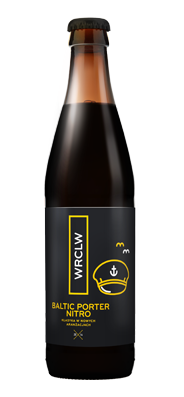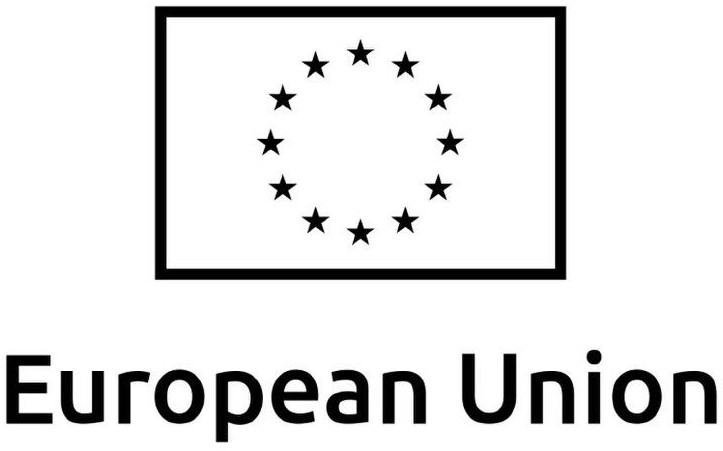We have brewed the Baltic Porter style abroad before. Now, it’s time to give it a try in our . brewery! WRCLW Baltic Porter NITRO is a dark bottom-fermenting beer that has aged for a sufficient amount of time. With its malty foundations, subtle aroma of dark malts, the style brings to mind chocolate-coated wafers. The beer has a clear, full, sweet but well-balanced profile. Nitrogen infusion gives the bee ran usually velvety texture and a beautiful beige head made of tiny bubbles.
 |
 |
WRCLW Baltic Porter NITROWRCLW Baltic Porter NITRO is a dark bottom fermenting beer that has fermented and aged for a long time. Time brings out the best in Baltic porters. With its malty foundations, subtle aroma of dark malts, the style brings to mind chocolate-coated wafers. |
Style
As the name itself suggest, the Baltic Porter originated in the Baltic Sea region in the 19th century as a response to the British Imperial Stout. In contrast to is predecessor, the Baltic Porter has a more intense malty core and well-balanced flavours. This long fermenting and long ageing beer, is, in a word, a darker version of bock. With its less distinct roasted notes, the Baltic Porter is quite sweet. It will certainly warm you up. In spite of it being a strong beer, it is highly drinkable.
Malts/ extract:
Similarly to Bock, the core of the Baltic Porter has been made by the Munich malts, which account for the beer’s sweetness and full-body. Caramel malts enhance sweet taste and introduce a large number of melanoidins, which bring to mind caramelized bread crust. Colouring malts produce dark colour but in contrast to Imperial Stout, the beer is non- transparent with ruby highlights. There are fewer dark malts than in Imperial Stout. For this reason, coffee and chocolate tones are less intense. Another interesting ingredient is barley malt smoked with the use of cherry wood. It is not too dominant. Just enough to produce a subtle overtone to enrich its complex aromas.
Hops:
We have used traditional Continental hops: the German Magnum to achieve sufficient levels of bitterness, and Slovenian Styrian Goldings to achieve the tobacco-herbal profile, which with time undergoes the process of oxidization in dark, strong beers.
Ageing:
Such thick and intense beers store as well as good wines. It is an excellent idea to get a few bottles and open them over a longer period of time (every half a year, ever year) to compare how the beer changes. First, the beer is going to bring to mind chocolate flavours. With time it is going to release aromas of porto, sherry, and dry fruit (prunes, raisins, and cherries). It’s an experience not to be missed! If stored in optimal conditions, the beer is going to take us by surprise with its rich aromas that get better with time, even after 5 or 20 years.
*Make sure the beer is stored in optimal conditions (temperature of about 10C, no exposure to sunlight) and it’s going to produce noble oxidization notes.
Nitrogen infused beer:
The idea behind infusing beers with nitrogen rather than carbon dioxide is to increase its drinkability and change its structure into a more velvety one.
Nitrogen’s ability to dissolve in liquids is several times lower than that of carbon dioxide. What we have used at Browar Stu Mostów is advanced technological solutions that allow us to dissolve as much nitrogen as possible in beer. Right after opening and pouring the beer into a glass, nitrogen escapes as quickly as possible creating a cascade effect of a huge amount of tiny bubbles. After a while, nitrogen moves up whisking protein dissolved in beer. As a result of this process creamy and long-lasting beer head of tiny bubbles is produced, which is not available in carbonated beers.
To fully enjoy the nitro beer, serve it right:
- cool the bottle down to 7 ⁰C; don’t shake it;
- open the bottle quickly and pour the beer into a glass holding the bottle vertically;
- now you can enjoy the cascade effect, which produces a beautiful beer head of tiny
bubbles.
This style itself is unique for its thickness. For this reason, the cascade effect takes place as if in a slow motion. High thickness and stickiness make the bubbles to go up slowly. It is recommended to wait a bit longer before pouring the beer into a glass to give the nitrogen bubbles more time to act. It’s not a waste time. The process itself is very impressive!
- Style: Baltic Porter NITRO
- Parameters
- Ecxtract: 25,0%
- Alcohol: 9,7% obj.
- IBU: 40
- Ingredients:
- Malts: Munich, Pilsner, caramel 100-130 EBC, smoked cherry, carafa special III, colouring malt
- Hops:
- Bitter: Hallertau Magnum (DE),
- Aromatic: Styrian Goldings (SL)
- Yeast: bottom-fermentation yeast strain W34/70
- Look: dark brown, nearly black with ruby highlights and beige head made of tiny bubbles that produce the cascade effect
- Aromas: malty, bread-like, caramel, liquorice, toffee, nutty, cherries, raisins, molasses
- Mouthfeel:
- thick, velvety smooth
- sweet liquorice
- warming, bitter chocolate finish
- Serving temperature: 12-17⁰C
- Glass: Tulip, Sniffter
- Foodpairing:
- Smoked, grilled meats, specifically beef, chili
- Cheeses: goat mature Pecorino cheese with pepper
- Dessert: crème brulee with redcurrant

